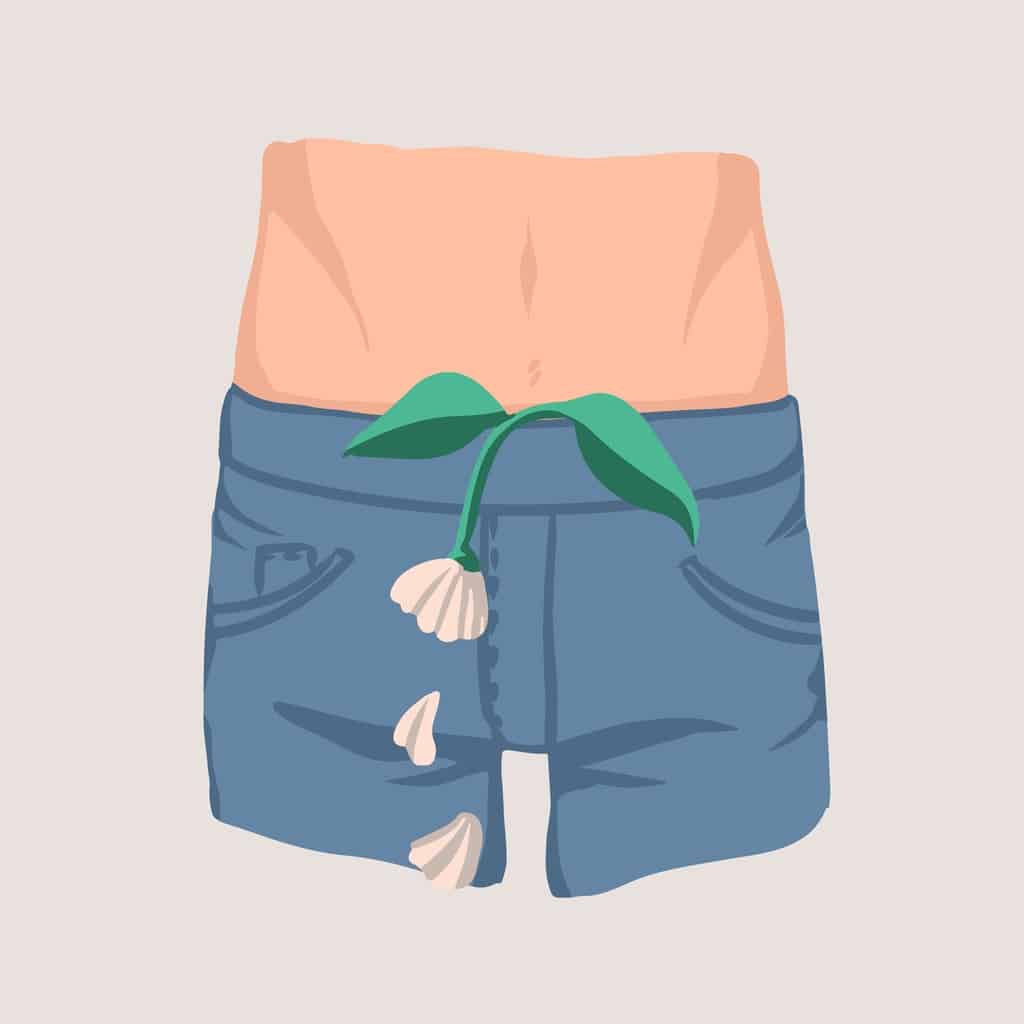
[cmamad id=”19195″ align=”center” tabid=”display-desktop” mobid=”display-desktop” stg=””]
Besides regrowing nerves… Can this weird androgen (that’s even stronger than testosterone) make you feel more, perform better…AND make you loads bigger?
—–Important Message—–
This video is EXTREMELY controversial.
Warning: our publisher is worried about keeping this posted and may have to delete it to avoid legal pressures…watch it NOW.
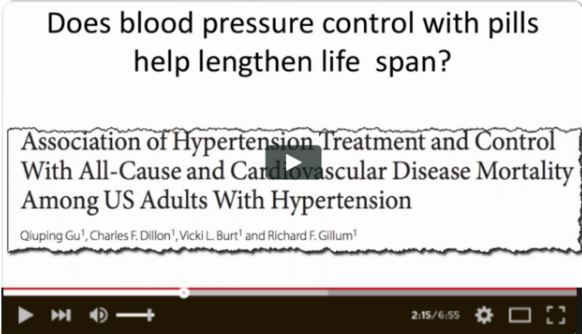
Click here to watch this new 5-minute eye-opening video…
——-
Regrowing penile nerves
Today we’re talking about regrowing penile nerves, and we’re starting with the weird androgen that’s supposedly stronger than testosterone…
Scientists used to think of dihydrotestosterone (DHT) as a minor androgen… And most doctors don’t know how important it really is…
The medical industry treated it almost as a testosterone byproduct – an evolutionary inconvenience that causes balding and prostate problems.
Supposedly.
But this myth is mostly a result of advertising.
The truth is that DHT is actually a stronger androgen than testosterone.
“Finasteride is a 5α-reductase inhibitor that decreases the conversion of testosterone to the more potent androgen dihydrotestosterone (DHT) in many tissues throughout the body.”
(5α-reductase inhibitor = DHT blocker)
This should not be too surprising, as all other downstream hydrogenated (reduced) steroids work the same way:
- Cortisol is more active than cortisone
- Estradiol is more active than estrone
- 5α-dihydroprogesterone is more active than progesterone
Men often use finasteride for hair loss – and for a few other things.
Patients who are on Propecia™ (for example) are often too optimistic…
They are convinced that it will actually work…
So they don’t take much notice of what’s on the warning label – which now must include sexual side effects.
And warning labels, in general, have made a mockery of themselves over the years by listing more frivolous things such as dry eye.
That is certainly grounds for dismissal of the warning label by many people…
Maybe companies even do it intentionally for this very reason.
[cmamad id=”19196″ align=”center” tabid=”display-desktop” mobid=”display-desktop” stg=””]
The FDA mandated listing these sexual side effects as of 2012…
And that was most likely the result of this study here (and the one by Hassani published just one year earlier):
Doctor Michael Irwig read all of the previous data and also conducted a trial of his own.
He recruited 71 men with sexual side effects who had been taking either 1 mg or 1¼ mg of finasteride daily.
He graded them using a standardized test called the Arizona Sexual Experience Scale (ASEX) and reported the results.
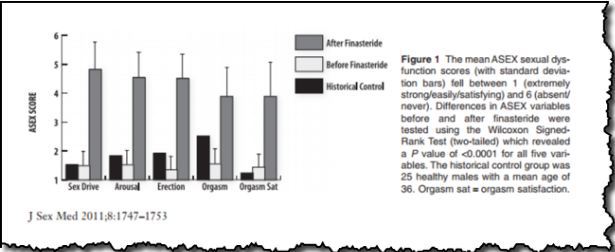
The most surprising finding was how persistent these side effects are – and they last for years.
“The mean duration of the persistent sexual side effects was at least 40 months, with 20% of subjects reporting durations of over 6 years.”
This is quite alarming.
And these long-term changes are bit difficult to comprehend.
Irwig doesn’t have the answer – but he summarizes a few theories involving DHT in the brain.
While it’s true that some parts of the brain are androgen-sensitive, there’s an even more DHT-sensitive area in the nervous system – in the lower spinal column.
And the nerves in this area shoot off to the nerves that run to the penis and directly control the muscles there.
In the absence of DHT or its precursor, testosterone, these important nerves regress.
Added androgens can usually reverse this effect.
And this nerve locus is more sensitive to DHT than it is to testosterone…
This was shown as far back as 1980 – by the same person who discovered it:

He found a small area in the lower spinal cord that is responsive to androgens.
That area supplies the nerve offshoots that control the male sex organs – specifically, the muscles.
He named it the spinal nucleus of bulbocavernosus.
This is present in males and absent in females and castratos.
(Castratos are males who never reached sexual maturity – for hormonal or other reasons.)
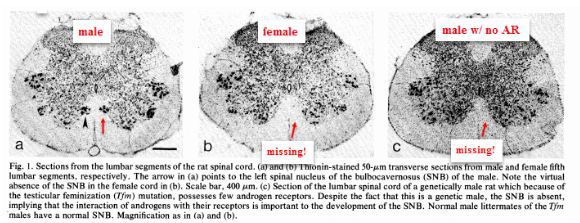
Irwig also injected each of his rats with one of these radioactive steroid hormones:
- Estradiol
- Testosterone
- DHT
After 24 hours, he cut the rats into little pieces and measured the radioactivity in this spinal region…
Not surprisingly, he found that estradiol didn’t bind at all…
But the androgens did.
What is notable here is that DHT binds more than testosterone.

And there is no way to tell whether the testosterone had been converted to DHT first or not…
This conversion adds just two hydrogen atoms and wouldn’t change the radioactivity.
You might think at first that these nerves are only responsive to androgens during development.
This is not the case.
These nerves continue to be androgen-sensitive throughout adulthood.
Elizabeth Kurz and colleagues proved this only six years after the discovery:

She castrated adult rats, animals whose nerves were fully developed.
Of these castrated rats, she gave one group testosterone.
These rats weren’t taking finasteride, so we can assume that much of this testosterone was converted to DHT.
“Until recently, the actions of steroids in the adult were not thought to involve major structural changes, such as synaptic reorganization of steroid-sensitive neural circuits.”
She noticed a reduction in cell volume here in the adult castrated rats.
Castrated rats also have undetectable levels of androgens.
And she noticed a reduction in dendrite length…
The nerves that branched off towards the penis were actually shorter in the castrated rats.
And she largely reversed this in the castrated rats by giving them testosterone, the DHT precursor.
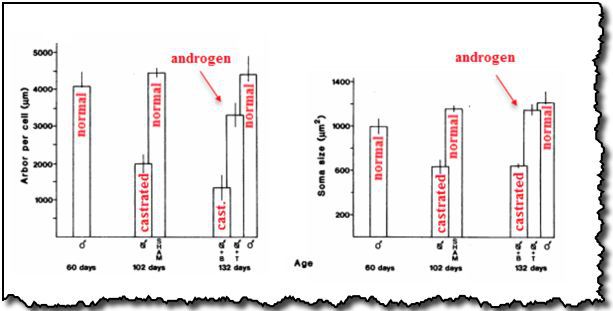
One year later, M.G. Leedy replicated these results exactly.
Testosterone was able to regrow these nerves, perhaps by turning into DHT first.
Six years earlier, Marc Breedlove showed that these nerves had a higher affinity for DHT than for testosterone.
This is probably why DHT or its precursor, testosterone, have been shown to reverse erectile dysfunction.
“Our results indicate that androgens can be involved in this process by regulating the length of dendrites and the size of motoneuronal somas in adulthood.”
In more than one study, testosterone has been shown to do this.
And DHT was shown to do this in a 2002 study in Finland:

They gave 120 men topical DHT gel for six months and had them report their activities.
It worked. The men reported positive and significant effects from the DHT gel.
“Treatment with DHT improved the ability to maintain erections and transiently improved early morning erections.”
From the preceding studies, you might be led to think that nerves were thickened and elongated directly by the DHT.
And a lack of DHT, which happens when you use finasteride, causes the reverse to happen.
But finasteride doesn’t actually lower testosterone concentrations.
If anything, it raises T.
This is yet more indication that DHT has more important functions what Merck tries to sell you on.
Finasteride also raises estrogen by diverting more testosterone towards aromatase.
Testosterone concentrations increase when T can’t become DHT.
It gets backed up and spills down the aromatase pathway.
And that is probably why gynecomastia (man boobs) is also a common finasteride side effect.
“This is supported by the observation that percutaneous T and DHT have an equal androgen effect in patients with hypogonadism, and DHT may have even greater pharmacological potency than other androgens.”
But in this study, Kunelius showed that topical DHT gel actually lowered estradiol – AND testosterone.
It’s hard to know what to make of this…
However, since the body already has quite a lot of DHT – the most active androgen – it would be fair to assume that topical DHT gel shuts off testosterone production…
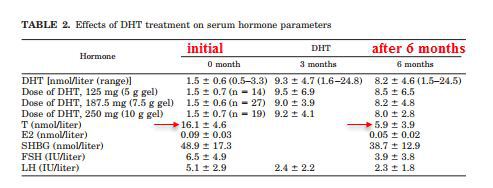
…in a negative feedback loop that is designed to keep the levels in range.
And the fact that erections improved even while testosterone decreased by 63% strongly implies that DHT is the primary androgen.
“In a previous study…as well as in the present study, the administration of DHT decreased serum estradiol levels by 50%.”
It might actually be worth taking a low dose if it were actually effective.
But there are certainly safer and more effective drugs out there.
Mineralocorticoid receptor inhibitors such as spironolactone, cyclosporine A, and FK-506 all seem to work better.
And I think the pharmaceutical companies know this.
If certain highly effective drugs were known to be highly effective, there would be little money to be made in developing new ones…
Or even in selling their existing overpriced ones.
—-Important Message—-
Think you need testosterone? Don’t do anything until you read this
Once a man begins using medical testosterone, his body down-regulates its natural production.
Plus, a man’s body turns this fake testosterone into estrogen – the feminine hormone that grows breasts and damages a man’s libido further.
So now, the man’s body stops producing its own testosterone naturally and it turns a big part of the fake testosterone into estrogen.
So the man needs more and more of the fake testosterone… but that causes his body to make more estrogen. What a vicious downward spiral for the man’s sex drive and sexual performance!
So now, knowing all this…
The only thing left is knowing how to raise testosterone naturally.

——


Leave a Reply